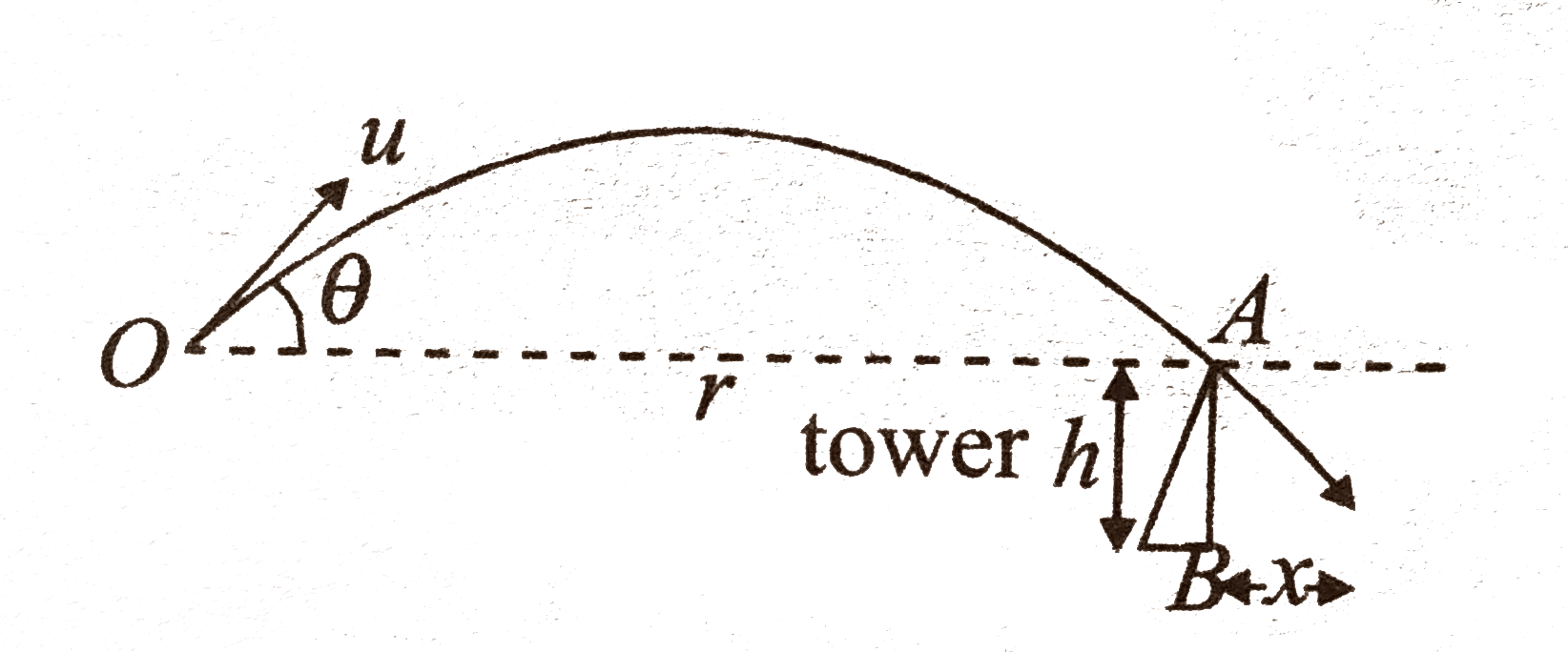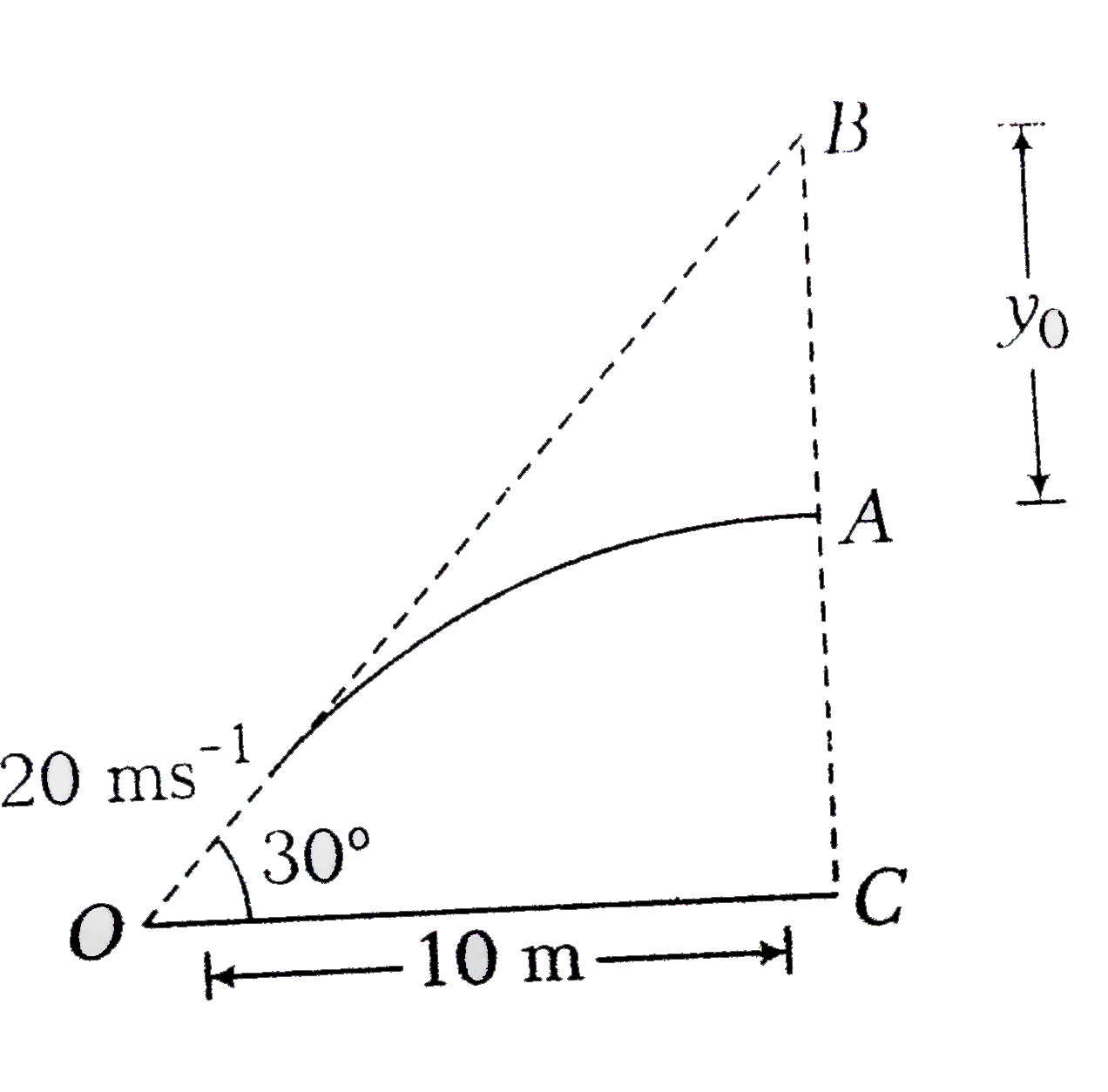A ball is thrown from a roof top at angle of 40∘above the horizontal. It hits the ground a few seconds later. At what point during its motion. Does the ball have
(a) greatest speed (b) smallest speed (c ) greatest acceleration ? Explain.
To solve the problem, we need to analyze the motion of the ball thrown from a rooftop at an angle of 40 degrees above the horizontal. We will determine the points at which the ball has the greatest speed, the smallest speed, and the greatest acceleration.
Step 1: Understanding the Motion
The ball follows a parabolic trajectory due to the influence of gravity. The motion can be divided into two components: horizontal and vertical. The initial velocity can be resolved into horizontal (u cos 40°) and vertical (u sin 40°) components.
Step 2: Identifying the Points of Interest
1. Point A: The point where the ball is thrown.
2. Point B: The highest point of the trajectory.
3. Point C: The point just before the ball hits the ground.
4. Point D: The point where the ball hits the ground.
Step 3: Greatest Speed
- The speed of the ball is maximum just before it hits the ground (Point C).
- At this point, the ball has fallen the greatest distance, converting potential energy into kinetic energy.
- Thus, the greatest speed occurs at Point C.
Step 4: Smallest Speed
- The smallest speed occurs at the highest point of the trajectory (Point B).
- At this point, the vertical component of the velocity is zero, and only the horizontal component (u cos 40°) is present.
- Therefore, the smallest speed is at Point B.
Step 5: Greatest Acceleration
- The acceleration due to gravity (g) acts on the ball throughout its motion and is directed downwards.
- This acceleration is constant at all points in the trajectory (A, B, C, and D).
- Therefore, the greatest acceleration is the same at all points, which is g (approximately 9.81 m/s²).
Summary of Results
- (a) Greatest speed: Point C
- (b) Smallest speed: Point B
- (c) Greatest acceleration: Constant at all points (g)
The ball follows a parabolic trajectory due to the influence of gravity. The motion can be divided into two components: horizontal and vertical. The initial velocity can be resolved into horizontal (u cos 40°) and vertical (u sin 40°) components.
1. Point A: The point where the ball is thrown.
2. Point B: The highest point of the trajectory.
3. Point C: The point just before the ball hits the ground.
4. Point D: The point where the ball hits the ground.
- The speed of the ball is maximum just before it hits the ground (Point C).
- At this point, the ball has fallen the greatest distance, converting potential energy into kinetic energy.
- Thus, the greatest speed occurs at Point C.
- The smallest speed occurs at the highest point of the trajectory (Point B).
- At this point, the vertical component of the velocity is zero, and only the horizontal component (u cos 40°) is present.
- Therefore, the smallest speed is at Point B.
- The acceleration due to gravity (g) acts on the ball throughout its motion and is directed downwards.
- This acceleration is constant at all points in the trajectory (A, B, C, and D).
- Therefore, the greatest acceleration is the same at all points, which is g (approximately 9.81 m/s²).
- (a) Greatest speed: Point C
- (b) Smallest speed: Point B
- (c) Greatest acceleration: Constant at all points (g)
Topper's Solved these Questions
Similar Questions
A stone is thrown from the top of a tower at an angle of 30∘ above the horizontal level with a velocity of 40 m/s. it strikes the ground after 5 second from the time of projection then the height of the tower is
View SolutionA particle of mass m is projected with speed u at angle θ with horizontal from ground. The work done by gravity on it during its upward motion is
View Solution
Knowledge Check
- Question 1 - Select One
A ball is thrown from the top of a tower with an initial velocity of 10m/s at an angle of 30∘above the horizontal. It hits the ground at a distance of 17.3 m from the base of the tower. The height of the tower (g=10m/s2) will be
A5 mB20 mC15 mD10 m
A ball is thrown at a speed of 40 m/s at an angle of 600 with the horizontal. Find a. the maximum height reached and b. the range of te ball. Take g=10ms2.
View SolutionA ball is thrown from a field with a speed of 12.0 m/s at an angle of 450 with the horizontal. At what distance will it hit the field again ? Take g=10.0ms2
View SolutionA ball is thrown from the top of a tower with an intial velocity of 10 m//s at an angle 37∘ above the horizontal, hits the ground at a distance 16 m from the base of tower. Calculate height of tower. [g=10m/s2]
View SolutionA ball is thrown upwards with a speed u from a height h above the ground.The time taken by the ball to hit the ground is
View SolutionA ball is thrown from a point in level with velocity u and at a horizontal distance r from the top os a tower of height h.
At what horizontal distance x from the foot of the tower does the ball hit the ground ? View Solution
View SolutionA ball is thrown from the top of a building 45m high with a speed 20ms−1 above the horizontal at an angle of 30∘. Find
(a) The time taken by the ball to reach the ground.
(b) The speed of ball just before it touches the ground.View SolutionA ball is thrown from a point O aiming a target at angle 30∘ with the horizontal so that the ball hits the target at B but the ball hits at point A, a vertical distance h below B. If the intial velocity of the ball is 20ms−1 and the horizontal distance between O and C is 10 m. Find the value of h.
 View Solution
View Solution

